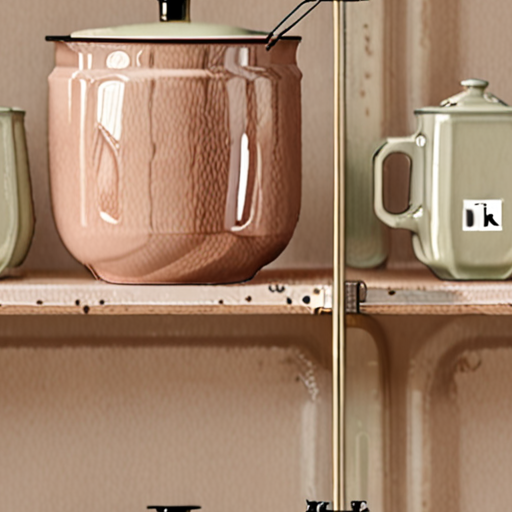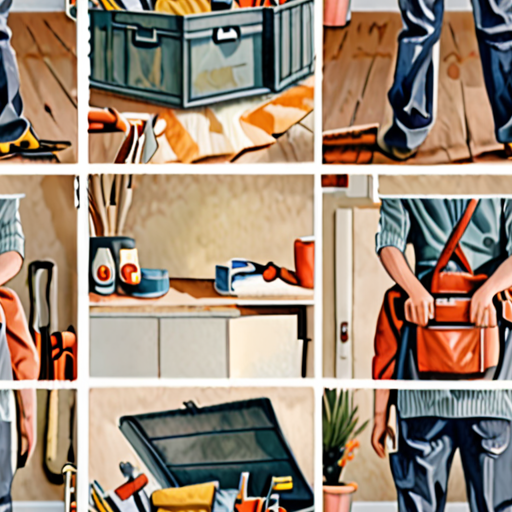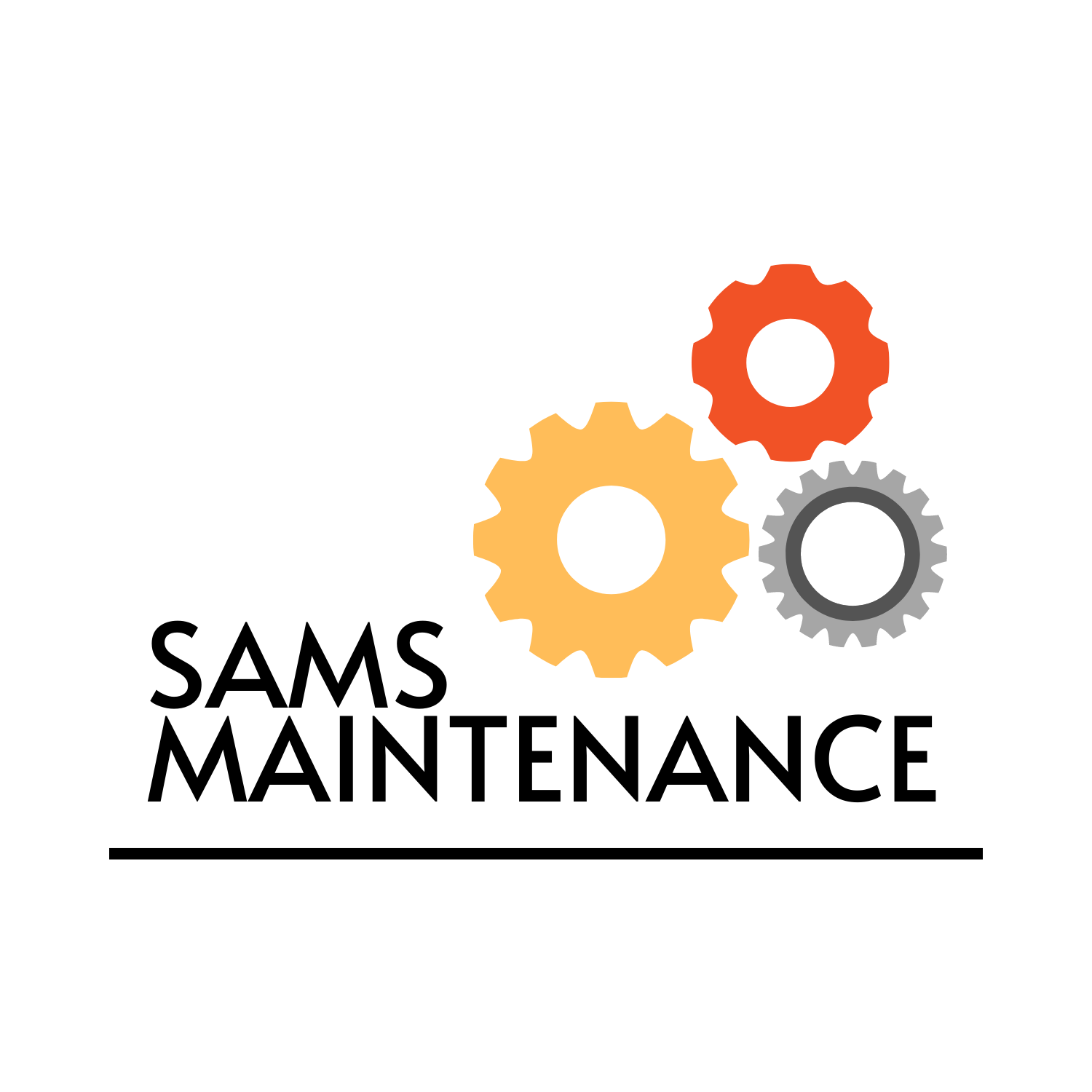As a homeowner, taking care of your property can seem like a daunting task, especially when it comes to performing common diy home repairs without breaking the bank or sacrificing your free time. However, mastering the art of home maintenance can not only save you money in the long run but also give you a sense of pride and accomplishment in being able to tackle small issues before they become major problems.

Performing Common DIY Home Repairs Without Hiring a Professional
As a homeowner, tackling DIY home repairs can seem daunting, but with the right knowledge and tools, you can save time and money by becoming your own handyman.
- Assess Your Skills and Comfort Level
- Gather Necessary Tools and Materials
- Start with Simple Tasks
- Learn Basic Plumbing and Carpentry Skills
- Practice Safety Precautions
- Consult Local Building Codes and Regulations
- Join Online Communities and Forums
- Stay Up-to-Date with Latest Trends and Methods
- Consider Investing in Quality Tools and Equipment
- Don’t Be Afraid to Ask for Help
Before diving into any repair, evaluate your skills and comfort level with the task at hand. If you’re unsure or lack experience, consider consulting online tutorials, YouTube videos, or seeking advice from a friend or family member who has experience with DIY projects.
Making a list of required tools and materials beforehand will help prevent last-minute trips to the hardware store and ensure you have everything needed to complete the job efficiently.
Begin with minor repairs, such as tightening loose screws, replacing light fixtures, or patching holes in walls. These small victories will boost your confidence and prepare you for more complex tasks.
Familiarize yourself with fundamental plumbing and carpentry techniques, including pipe fitting, jointing, and basic woodworking. Online courses, workshops, or hands-on training can help you develop these essential skills.
Always wear protective gear, such as gloves, safety glasses, and a dust mask, when working with power tools or handling hazardous materials. Ensure good ventilation and keep the work area clean and organized.
Familiarize yourself with local building codes, permits, and regulations before embarking on any significant repair or renovation project. This will help you avoid costly mistakes and potential fines.
Connect with fellow DIY enthusiasts through online forums, social media groups, or specialized communities. Share experiences, ask questions, and learn from others who have tackled similar projects.
Regularly update your knowledge by attending workshops, webinars, or conferences focused on DIY home repairs and renovations. Stay informed about new products, techniques, and best practices in the industry.
Purchase reliable, high-quality tools and equipment to ensure efficient and safe completion of projects. Invest in a well-stocked toolbox and consider renting or buying specialized equipment for specific tasks.
If you’re unsure or uncomfortable with a particular task, don’t hesitate to seek assistance from a professional or a trusted friend or family member. It’s always better to err on the side of caution and seek help when needed.
By following these guidelines and continuously developing your skills, you’ll become more confident in your ability to tackle common DIY home repairs, saving you time, money, and stress in the long run.
Essential DIY Home Maintenance Tasks Every Homeowner Should Know
As a homeowner, taking care of your property can seem daunting, but there are many DIY home maintenance tasks that you can easily handle yourself.
-
Leaky Faucet Repair
A leaky faucet may seem like a minor issue, but it can waste a significant amount of water and increase your water bill.
To fix a leaky faucet, you’ll need to locate the source of the leak and replace the worn-out parts.
For example, if the leak is coming from the faucet’s aerator, you can simply remove it and clean or replace it as needed.
Alternatively, if the leak is coming from the faucet’s cartridge or valve seat, you may need to replace the entire faucet.
Either way, fixing a leaky faucet is a relatively simple DIY task that can save you money and reduce your environmental impact.
-
Clogged Drain Cleaning
Clogged drains can be frustrating and messy, but they’re often easy to fix with a few basic tools and techniques.
First, try using a plunger or plumbing snake to dislodge any blockages in the drain.
If that doesn’t work, you may need to use a chemical drain cleaner or call a professional plumber.
However, before resorting to harsh chemicals or expensive plumbing services, try using a natural drain cleaner like baking soda and vinegar.
This combination of ingredients can help dissolve grease and other debris that may be causing the clog.
-
Changing Air Filters
Dirty air filters can decrease airflow and increase energy bills, making it essential to change them regularly.
Most air filters are located in the return duct or near the furnace, and they’re usually marked with a filter replacement indicator.
To change the air filter, simply pull out the old one and replace it with a new one of the same size and type.
Make sure to dispose of the old filter responsibly and consider upgrading to a high-efficiency filter for improved indoor air quality.
-
Power Washing Exterior Surfaces DIY Home Maintenance Tasks Every Homeowner Should Know
As a homeowner, taking care of your property can seem daunting, but there are many DIY home maintenance tasks that you can easily handle yourself.
-
Leaky Faucet Repair
A leaky faucet may seem like a minor issue, but it can waste a significant amount of water and increase your water bill.
To fix a leaky faucet, you’ll need to locate the source of the leak and replace the worn-out parts.
For example, if the leak is coming from the faucet’s aerator, you can simply remove it and clean or replace it as needed.
Alternatively, if the leak is coming from the faucet’s cartridge or valve seat, you may need to replace the entire faucet.
Either way, fixing a leaky faucet is a relatively simple DIY task that can save you money and reduce your environmental impact.
-
Clogged Drain Cleaning
Clogged drains can be frustrating and messy, but they’re often easy to fix with a few basic tools and techniques.
First, try using a plunger or plumbing snake to dislodge any blockages in the drain.
If that doesn’t work, you may need to use a chemical drain cleaner or call a professional plumber.
However, before resorting to harsh chemicals or expensive plumbing services, try using a natural drain cleaner like baking soda and vinegar.
This combination of ingredients can help dissolve grease and other debris that may be causing the clog.
-
Changing Air Filters
Dirty air filters can decrease airflow and increase energy bills, making it essential to change them regularly.
Most air filters are located in the return duct or near the furnace, and they’re usually marked with a filter replacement indicator.
To change the air filter, simply pull out the old one and replace it with a new one of the same size and type.
Make sure to dispose of the old filter responsibly and consider upgrading to a high-efficiency filter for improved indoor air quality.
-
Power Washing Exterior Surfaces
Power washing exterior surfaces can help remove dirt, grime, and mildew, giving your home a fresh new look.
Before power washing, make sure to cover any plants, windows, and doors with plastic sheeting or tarps.
Next, mix a solution of warm water and mild detergent in a bucket, and dip the power washer’s nozzle into the solution.
Start power washing from the top of the surface and work your way down, using a wide fan tip to cover large areas quickly.
Be careful not to use too much pressure, which can damage siding or trim.
-
Inspecting and Replacing Smoke Detector Batteries
Smoke detectors are a crucial safety feature in any home, and regular inspections can help ensure they’re working properly.
Check smoke detector batteries monthly and replace them annually or according to the manufacturer’s instructions.
Also, inspect the smoke detector itself for any signs of damage or wear, and replace it if necessary.
Remember, working smoke detectors can save lives in the event of a fire, so don’t neglect this important DIY task.
-
Sealing Drafts Around Windows and Doors
Drafts around windows and doors can let cold air in and warm air out, increasing your energy bills and reducing comfort.
Use caulk or weatherstripping to seal gaps and cracks around windows and doors.
For larger gaps, consider using spray foam insulation or expanding foam to fill the space.
By sealing drafts, you can save money on energy bills and enjoy a cozier home year-round.
-
Checking and Replacing HVAC Filters
Dirty HVAC filters can decrease airflow and increase energy bills, making it essential to check and replace them regularly.
Locate the HVAC filter and pull it out to inspect its condition.
Replace the filter with a new one of the same size and type, and make sure to dispose of the old filter responsibly.
Consider upgrading to a high-efficiency filter for improved indoor air quality and reduced energy bills.
-
Trimming Trees and Shrubs
Overgrown trees and shrubs can damage your home’s exterior and obstruct views, making it essential to trim them regularly.
Use pruning shears or loppers to cut back branches and stems, and make sure to wear protective gloves and eyewear.
Remove any dead or diseased branches, and shape the remaining foliage to maintain a neat and tidy appearance.
Regular tree trimming can also help prevent pest infestations and reduce the risk of property damage.
-
Insulating Water Pipes
Exposed water pipes can freeze and burst during cold weather, causing costly damage and disruption.
Wrap exposed pipes with foam pipe insulation or heat tape to keep them warm and protected.
Also, consider installing freeze-proof faucets or frost-proof spigots to prevent freezing and bursting.
By insulating water pipes, you can save money on repair costs and enjoy peace of mind during extreme weather conditions.
-
Checking and Replacing Fire Extinguishers
Fire extinguishers are a crucial safety feature in any home, and regular checks can help ensure they’re working properly.
Check fire extinguishers monthly and replace them annually or according to the manufacturer’s instructions.
Also, inspect the fire extinguisher itself for any signs of damage or wear, and replace it if necessary.
Remember, working fire extinguishers can save lives in the event of a fire, so don’t neglect this important DIY task.
-
Sealing Gaps Around Electrical Outlets
Gaps around electrical outlets can let dust and moisture in, damaging electronics and posing a fire hazard.
Use outlet sealers or switch plate covers to seal gaps and cracks around electrical outlets.
For larger gaps, consider using spray foam insulation or expanding foam to fill the space.
By sealing gaps around electrical outlets, you can protect your electronics and enjoy a safer home environment.
-
Checking and Replacing Carbon Monoxide Detectors
Carbon monoxide detectors are a crucial safety feature in any home, and regular checks can help ensure they’re working properly.
Check carbon monoxide detectors monthly and replace them annually or according to the manufacturer’s instructions.
Also, inspect the detector itself for any signs of damage or wear, and replace it if necessary.
Remember, working carbon monoxide detectors can save lives in the event of a CO leak, so don’t neglect this important DIY task
-

CostEffective DIY Home Maintenance Projects
As a homeowner, I’m always looking for ways to save money and keep my home in great shape. One of the best ways to do this is through DIY home maintenance projects.
-
Leaky Faucet Fix
A leaky faucet may seem like a small issue, but it can waste a significant amount of water and increase your water bill. Fortunately, fixing a leaky faucet is a relatively simple DIY project that can save you money in the long run.
I recommend checking out our Faucet Repair Guide for step-by-step instructions on how to fix a leaky faucet.
-
EnergyEfficient Upgrades
Upgrading to energy-efficient appliances and lighting fixtures can help reduce your energy consumption and lower your utility bills. Some popular options include LED light bulbs, programmable thermostats, and EnergyStar-rated appliances.
For more information on energy-efficient upgrades, check out our Energy Efficiency Tips page.
-
Weatherstripping and Caulk
Weatherstripping and caulk can help seal gaps around windows and doors, reducing air leaks and preventing heat loss. These materials are easy to install and can be found at most hardware stores.
Learn more about weatherstripping and caulk in our Weatherstripping and Caulk Guide .
-
DIY Painting
Painting your walls can be a great way to give your home a fresh new look without breaking the bank. With a little preparation and some basic painting supplies, you can achieve professional-looking results.
Get started with our DIY Painting Guide for tips and tricks on how to paint like a pro.
-
Home Insulation
Adding insulation to your attic, walls, or floors can help reduce heat loss and prevent drafts. There are several types of insulation available, including fiberglass batts, cellulose, and spray foam.
Learn more about home insulation in our Home Insulation Guide .
-
Drain Cleaning
Clogged drains can be a real nuisance, but they’re often easy to fix with a plunger or drain snake. Regular drain cleaning can also help prevent clogs and keep your pipes flowing smoothly.
Check out our Drain Cleaning Guide for tips on how to clean your drains like a pro.
-
Roof Inspection
Regular roof inspections can help identify potential problems before they become major issues. Look for signs of wear and tear, such as missing shingles, curled or buckled shingles, and damaged flashing.
Learn more about roof inspection in our Roof Inspection Guide .
-
Foundation Repair
Cracks in your foundation can be a sign of a larger problem, such as settlement or water damage. Addressing these issues promptly can help prevent further damage and costly repairs down the road.
Get started with our Foundation Repair Guide for tips on how to repair cracks in your foundation.
-
Water Heater Maintenance
Regular water heater maintenance can help extend its lifespan and prevent costly repairs. Check the temperature and pressure relief valve, inspect the anode rod, and drain sediment from the tank.
Learn more about water heater maintenance in our Water Heater Maintenance Guide .
-
Smoke Detector Installation
Installing smoke detectors in your home can help protect you and your family from fires. Make sure to test them regularly and replace batteries as needed.
Get started with our Smoke Detector Installation Guide for tips on how to install smoke detectors correctly.
-
Garage Door Maintenance
Regular garage door maintenance can help prevent breakdowns and extend its lifespan. Lubricate moving parts, inspect cables and springs, and adjust the alignment of the door.
Learn more about garage door maintenance in our Garage Door Maintenance Guide .
-
Appliance Repair
Repairing appliances rather than replacing them can save you money and reduce waste. Check online tutorials, consult repair manuals, and seek professional help when necessary.
Get started with our Appliance Repair Guide for tips on how to repair common household appliances.
-
Seasonal Upkeep
Performing seasonal upkeep tasks can help keep your home in great shape and prevent costly repairs. Tasks may include cleaning gutters, inspecting roofs, and sealing drafts.
Learn more about seasonal upkeep in our Seasonal Upkeep Guide .

Top DIY Home Maintenance Tips and Tricks for Saving Time and Money
As a homeowner, staying on top of DIY home maintenance can seem daunting, but with the right knowledge and tools, you can save time, money, and reduce household stress.
-
Conduct Regular Inspections
Regular inspections can help identify potential issues before they become major problems. Check your home’s foundation, roof, walls, windows, doors, plumbing, electrical systems, and HVAC units for signs of wear and tear.
-
Maintain Your Plumbing System
A well-maintained plumbing system can save you money on water bills and prevent costly repairs. Check for leaks under sinks, around toilets, and near water heaters. Replace worn-out washers and gaskets, and consider installing low-flow fixtures.
-
Keep Your Gutters Clean
Clogged gutters can cause water damage, foundation problems, and pest infestations. Clean your gutters at least twice a year, and consider installing gutter guards to keep debris out.
-
Seal Air Leaks
Air leaks can increase your energy bills and make your home uncomfortable. Seal gaps around windows, doors, and ducts with caulk or spray foam.
-
Check Your Smoke and Carbon Monoxide Detectors
Smoke and carbon monoxide detectors can save lives. Test them monthly, and replace batteries annually. Consider installing smart detectors that alert you to potential hazards.
-
Prevent Pest Infestations
Pests can cause significant damage to your home and spread diseases. Seal entry points, store food properly, and consider hiring a professional to treat infestations.
-
Perform Seasonal Upkeep
Seasonal upkeep can help extend the life of your home’s systems and components. Change air filters, inspect roof shingles, and clean out dryer vents.
-
Learn Basic Repair Skills
Learning basic repair skills can save you money and give you confidence in tackling small projects. Start with simple tasks like fixing leaky faucets and patching drywall.
-
Invest in a Smart Thermostat
A smart thermostat can help you save energy and stay comfortable. Look for models that learn your schedule and preferences, and consider investing in a whole-house fan.
-
Consider Hiring a Professional
While DIY home maintenance is rewarding, there are situations where hiring a professional is necessary. Don’t hesitate to seek help for complex repairs or installations.
By following these DIY home maintenance tips and tricks, you’ll be better equipped to tackle common issues, save time and money, and enjoy a safer, more comfortable living space.
Simple DIY Home Maintenance Solutions
As a homeowner, it’s essential to stay on top of routine maintenance tasks to prevent minor issues from becoming major problems.
-
Inspect and Replace Air Filters
Dirty air filters can increase energy bills and reduce airflow, leading to premature wear on HVAC systems.
Replace disposable filters every 1-3 months, depending on usage and manufacturer recommendations.
-
Caulk and Weatherstrip Doors and Windows
Sealing gaps around doors and windows helps maintain a comfortable indoor climate, reduces drafts, and prevents moisture damage.
Apply caulk or weatherstripping to seal gaps, and reapply as needed.
-
Check and Replace Smoke Detector Batteries
Dead batteries in smoke detectors can lead to false alarms and reduced effectiveness in emergency situations.
Test smoke detector batteries monthly and replace them annually or according to manufacturer instructions.
-
Drain and Inspect Gutters
Clogged gutters can cause water damage, foundation issues, and pest infestations.
Clear leaves and debris from gutters twice a year, and inspect for damaged or loose sections.
-
Inspect and Maintain Plumbing Fixtures
Leaky faucets, toilets, and appliances waste water and increase utility bills.
Check for leaks, tighten loose connections, and repair or replace faulty fixtures as needed.
-
Power Wash Decks and Fences
Mold, mildew, and dirt buildup on outdoor surfaces can compromise structural integrity and aesthetics.
Power wash decks and fences regularly, using a low-pressure setting and gentle detergent.
-
Trim Tree Branches and Shrubs
Overgrown vegetation can damage roofs, siding, and windows, and create fire hazards.
Trim tree branches and shrubs regularly, keeping them at least 10 feet away from structures.
-
Check and Replace Water Heater Temperature and Pressure Relief Valves
Failed temperature and pressure relief valves can cause scalding, explosions, or leaks.
Inspect valves quarterly and replace them every 6-12 months or according to manufacturer instructions.
-
Inspect and Clean Range Hood Filters
Clogged range hood filters can reduce ventilation efficiency, increase cooking times, and create fire hazards.
Clean or replace range hood filters every 1-3 months, depending on usage and manufacturer recommendations.
-
Check and Replace Furnace Filters
Dirty furnace filters can decrease heating efficiency, increase energy bills, and reduce airflow.
Replace disposable filters every 1-3 months, depending on usage and manufacturer recommendations.
By staying on top of these simple DIY home maintenance tasks, you’ll save money, extend the lifespan of your home’s systems, and enjoy a safer, healthier living space.

Key DIY Home Maintenance Skills Every Homeowner Needs to Learn
To avoid costly emergency repairs, it’s essential to master these fundamental DIY home maintenance skills.
-
Inspect and Maintain Plumbing Systems
Regularly check pipes for leaks, corrosion, and mineral buildup. Replace worn-out washers and gaskets to prevent water damage and ensure efficient water flow.
-
Perform Routine HVAC Maintenance
Change air filters monthly, clean condenser coils, and inspect ductwork for damage or blockages. Schedule annual professional tune-ups to optimize heating and cooling efficiency.
-
Conduct Electrical Safety Checks
Verify circuit breakers and fuses function correctly, replace outdated outlets, and secure exposed wiring. Consider hiring a licensed electrician for complex tasks.
-
Address Roof Leaks and Damage
Clean gutters and downspouts regularly, repair damaged shingles, and inspect flashing around chimneys and vents. Address issues promptly to prevent water intrusion and structural damage.
-
Manage Pest and Rodent Infestations
Seal entry points, store food properly, and eliminate standing water to discourage pests. Use humane traps or call professionals for severe infestations.
-
Monitor and Maintain Appliances
Check expiration dates, clean filters, and perform routine maintenance tasks according to manufacturer instructions. Replace malfunctioning appliances to prevent fires and electrical hazards.
-
Keep Drains Clear and Functioning
Run hot water through drains, use baking soda and vinegar to dissolve clogs, and consider investing in a drain snake for tougher blockages.
-
Stay Informed About Local Building Codes and Regulations
Familiarize yourself with local ordinances regarding permits, inspections, and compliance. Stay up-to-date on changes to ensure your home remains code-compliant and safe.
-
Develop Basic Carpentry and Repair Skills
Learn to patch drywall, fix leaky faucets, and hang doors. Practice these skills to become self-sufficient in minor repairs and renovations.
-
Invest in Quality Tools and Equipment
Purchase a basic toolkit, including a level, pliers, screwdrivers, and wrenches. Invest in specialized tools for specific tasks, such as pipe cutters or tile saws.
Conclusion
Mastery of these DIY home maintenance skills empowers homeowners to take control of their property’s upkeep, preventing costly emergencies and ensuring a safe, comfortable living space. By staying informed, developing essential skills, and performing regular maintenance tasks, you’ll be well-equipped to handle common issues and enjoy peace of mind knowing your home is in good hands.

0 Comments